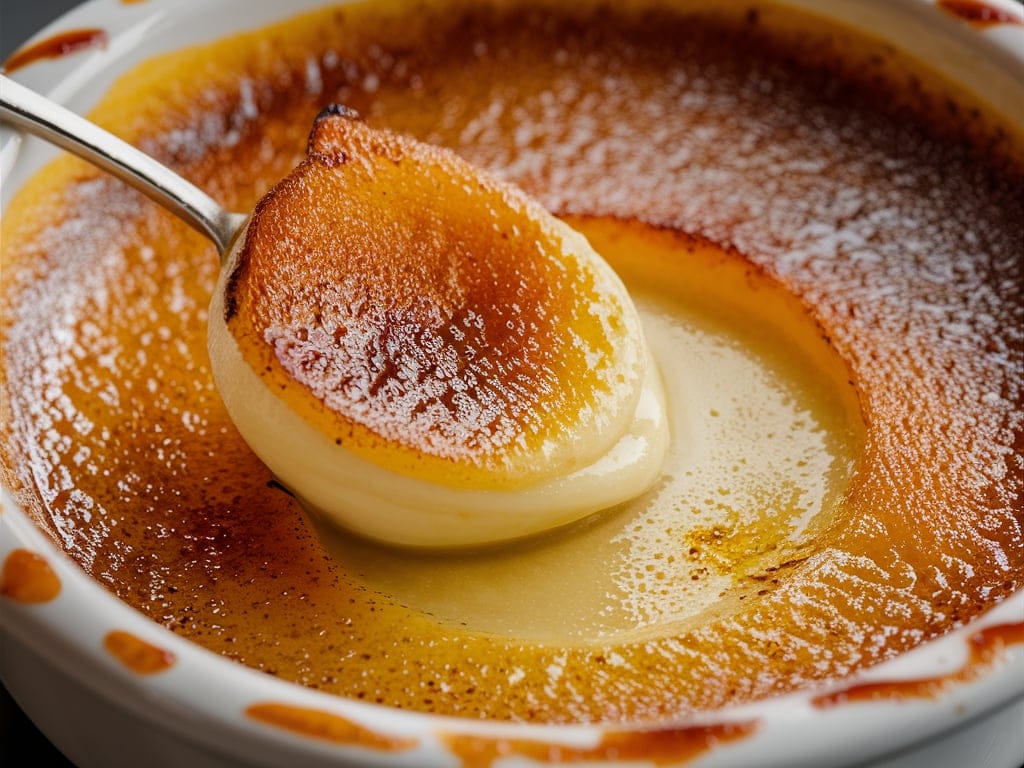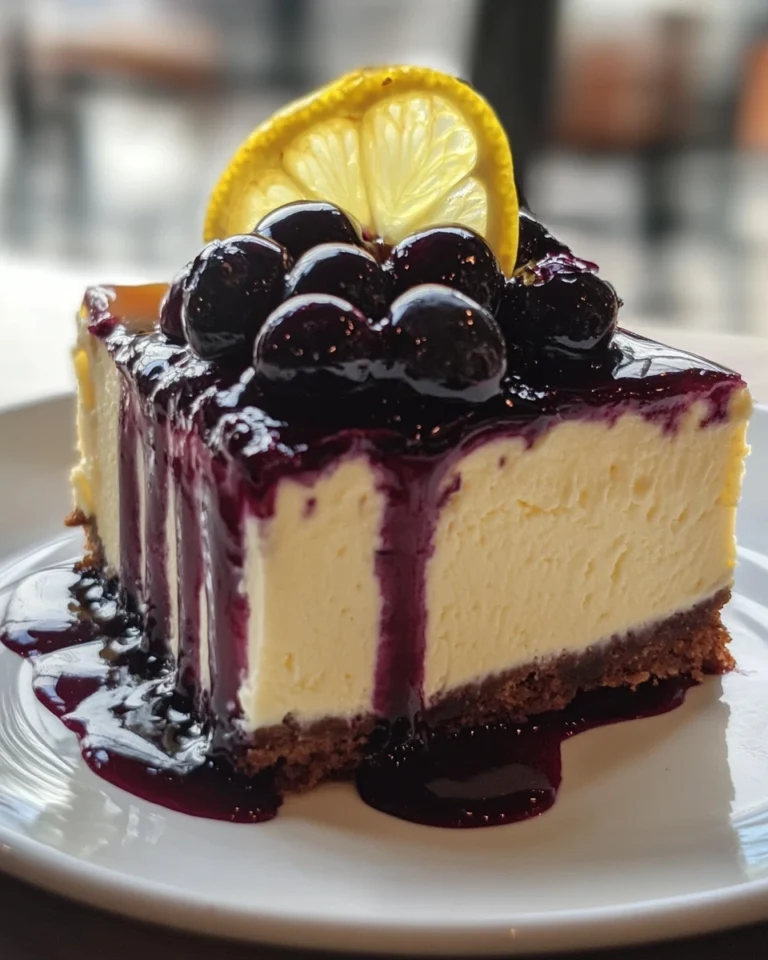Is Crème Brûlée Served Hot or Cold? A Comprehensive Guide
Is crème brûlée served hot or cold? Few desserts capture the elegance and sophistication of a well-made crème brûlée. This classic French dessert, with its smooth, rich custard base topped with a nutty, crunchy caramelized sugar crust, remains a staple in fine dining and home kitchens alike. However, a common question often arises: Is crème brûlée served hot or cold? Understanding the ideal serving temperature is crucial to enjoying this dessert at its best. In this comprehensive guide, we’ll delve deep into the nuances of serving crème brûlée, covering everything from its history to the best practices for preparation and serving, while providing you with tips, tricks, and insights that will help you master this iconic dessert.
The History and Evolution of Crème Brûlée
Before exploring the intricacies of serving crème brûlée, it’s essential to understand the origins of this beloved dessert. Crème brûlée, which translates to “burnt cream,” boasts roots in France, England, and Spain, with each country claiming some form of its creation.
French Origins
In France, people often associate crème brûlée with classic French cuisine. François Massialot first mentioned it in his 1691 cookbook, “Le Cuisinier Royal et Bourgeois.” This early version closely resembles the one we enjoy today, consisting of a rich custard base topped with caramelized sugar. The French take great pride in this dessert, which has become a symbol of culinary excellence.
English Influence: Trinity Cream
Interestingly, England also claims a version of crème brûlée through a dish known as Trinity Cream or Cambridge Burnt Cream. This dessert appeared at Trinity College, Cambridge, in the 17th century, where cooks poured rich custard into shallow dishes and caramelized the sugar with a hot iron. The result closely mirrors what we now call crème brûlée, leading some to believe that the English played a significant role in its development.
Spanish Roots: Crema Catalana
In Spain, people have enjoyed a similar dessert called Crema Catalana for centuries. Crema Catalana, or Catalan Cream, uses milk rather than cream and includes flavors like lemon or orange zest and cinnamon. Though it differs slightly in ingredients and preparation, many consider Crema Catalana a cousin to crème brûlée, adding to the debate over the true origins of this dessert.
The Modern Crème Brûlée
Is crème brûlée served hot or cold? Today, most people recognize crème brûlée as a French dessert, though its international influences remain undeniable. Over the centuries, it has evolved and adapted to different culinary traditions, with various flavorings and toppings emerging. However, the essential components—rich custard and a caramelized sugar topping—remain unchanged, making crème brûlée a timeless classic.
The Importance of Temperature in Crème Brûlée
Achieving the perfect balance between the creamy custard and the crispy caramelized sugar is essential when preparing crème brûlée. The ideal temperature for serving this dessert is slightly chilled—not cold, but also not room temperature. This delicate balance ensures that the custard remains firm yet smooth, while the sugar crust retains its crispness. The temperature of the custard directly impacts the dessert’s mouthfeel and the effectiveness of the caramelization process. Serving it too cold can lead to an unpleasant experience, with the sugar layer potentially becoming soggy due to condensation. Conversely, serving it warm might cause the custard to lose its structure.
Why Temperature Matters
The serving temperature of crème brûlée holds significant importance for several reasons. First and foremost, temperature affects the mouthfeel of the dessert. “Mouthfeel” refers to the physical sensations in the mouth produced by the texture, temperature, and consistency of food. For crème brûlée, the ideal mouthfeel occurs when the custard is cool and creamy, and the sugar crust is warm and crunchy.
- Cool Custard: The custard should be cool, but not too cold. Serving custard directly from the refrigerator may make it too firm, lacking the smooth, creamy texture that defines crème brûlée.
- Warm Sugar Crust: The sugar crust should be warm and crisp, providing a satisfying contrast to the cool custard beneath it. This temperature difference enhances the overall sensory experience of eating crème brûlée.
How Temperature Affects Caramelization
Temperature also plays a critical role in the caramelization process. The sugar crust on crème brûlée forms by sprinkling a thin layer of sugar over the custard and caramelizing it with a kitchen torch or under a broiler. Caramelization happens when sugar is heated to a high temperature, causing it to melt and brown.
- Condensation: If the custard is too cold when caramelizing the sugar, condensation may form on the surface. This moisture can prevent the sugar from caramelizing properly, leading to a soggy or uneven crust.
- Overheating: Conversely, if the custard is too warm, the heat from the caramelization process may cause the custard to overcook, resulting in a grainy texture.
To avoid these pitfalls, let the crème brûlée sit out for a few minutes after refrigeration, allowing it to reach the optimal slightly cooler than room temperature. This allows the custard to firm up just enough to support the caramelized sugar layer, which can be achieved using a culinary torch. For those looking to perfect their torching techniques, exploring culinary torch techniques can be incredibly helpful.
How Long Should Crème Brûlée Chill Before Serving?
Proper chilling is key to a perfect crème brûlée. After cooking and cooling to room temperature, refrigerate the dessert for at least an hour. This refrigeration period allows the custard to develop the ideal texture—firm, yet slightly wobbly. However, avoid serving it directly from the refrigerator, as this can result in a too-cold dessert that interferes with the caramelization process.
The Chilling Process
Chilling crème brûlée isn’t just about lowering the temperature; it’s about achieving the right texture. The custard needs time to set and firm up after cooking, but it should still retain a slight wobble when gently shaken. This wobble signals that the custard is cooked to perfection—firm enough to hold its shape, but soft enough to melt in your mouth.
- Initial Cooling: After baking, allow the custard to cool to room temperature. This cooling phase is essential because placing hot custard directly in the refrigerator can cause it to become dense and grainy.
- Refrigeration: Once cooled to room temperature, cover the custard with plastic wrap to prevent a skin from forming on the surface. Then refrigerate it for at least one hour, but ideally, it can be chilled for several hours or overnight.
Serving Temperature
The ideal serving temperature for crème brûlée is slightly cooler than room temperature. After refrigerating the custard, let it sit at room temperature for a few minutes before serving. This brief period outside the refrigerator helps to eliminate the chill, allowing the custard to reach the perfect consistency.
- Avoid Over-Chilling: Serving crème brûlée straight from the refrigerator can result in a custard that is too cold and firm. The sugar may not caramelize properly, and the custard’s flavor may be muted.
- Perfect Temperature: The goal is to serve the custard when it is cool and creamy, but not cold. This ensures that the custard’s texture is smooth and that the flavors are fully developed.
Is crème brûlée served hot or cold? If the crème brûlée is too cold when you attempt to caramelize the sugar, condensation can form on the surface, preventing the sugar from crisping up properly. By allowing the dessert to sit out for a few minutes before torching, you can avoid this issue and achieve the perfect balance between the cold custard and warm, crunchy sugar topping. Understanding the nuances of custard consistency can further enhance your dessert-making skills.
Risks of Serving Crème Brûlée Cold
Serving crème brûlée too cold can negatively impact the overall experience. Here are the potential risks:
- Condensation: Cold custard can cause condensation when torched, leading to a soggy sugar layer.
- Poor Mouthfeel: A too-cold dessert can result in a less creamy, less enjoyable texture.
- Reduced Flavor: The custard’s flavors may not fully develop if the dessert is served too cold.
Condensation and Its Effects
One of the most common problems associated with serving crème brûlée cold is condensation. When cold custard encounters the heat of a torch, moisture can form on the surface, leading to several issues:
- Soggy Sugar Crust: Condensation can prevent the sugar from caramelizing evenly, resulting in a soggy, uneven crust that lacks the satisfying crunch typical of crème brûlée.
- Undercooked Sugar: In some cases, condensation can cause the sugar to melt rather than caramelize, leaving a wet, sticky layer on top of the custard.
Texture and Mouthfeel
Is crème brûlée served hot or cold? The texture of crème brûlée defines its character. A well-made crème brûlée should have a smooth, creamy custard base that contrasts with the crunchy sugar topping. However, serving it too cold can make the custard too firm, resulting in a less pleasant mouthfeel.
- Too Firm Custard: When the custard is too cold, it can become overly firm, losing the creamy, melt-in-your-mouth quality that makes crème brûlée so special.
- Muted Flavors: Cold temperatures can also mute the custard’s flavors, making it less rich and aromatic. The delicate balance of vanilla, cream, and sugar may not be as pronounced when the dessert is too cold.
Detailed Temperature Guide for Crème Brûlée
To serve crème brûlée at its best, aim for a temperature that is slightly cooler than room temperature. Here’s why:
- Slightly Cooler than Room Temperature: This temperature is ideal for torching the sugar layer without damaging the custard.
- Too Warm: The custard may lose its delicate structure.
- Too Cold: Condensation may form between the sugar and custard, preventing proper caramelization.
Achieving the Perfect Temperature
To achieve the perfect serving temperature for crème brûlée, follow these steps:
- Refrigerate the Custard: After baking and cooling to room temperature, refrigerate the custard for at least one hour. This chilling time allows the custard to firm up while retaining a creamy texture.
- Bring to Room Temperature: Before serving, allow the custard to sit at room temperature for 10-15 minutes. This helps to eliminate the chill and bring the custard to the ideal serving temperature.
- Caramelize the Sugar: Just before serving, sprinkle a thin layer of sugar over the custard and caramelize it with a kitchen torch. Move the torch in a circular motion to evenly distribute the heat.
- Serve Immediately: Serve crème brûlée immediately after caramelizing the sugar. This ensures that the sugar crust is crisp and the custard is at the perfect temperature.
Is Crème Brûlée Supposed to Be Cold in the Middle?
While the custard should be slightly chilled, it’s acceptable if the middle is a bit cooler. However, serving the entire dessert cold can diminish the flavor and texture. If time allows, let the dessert warm up evenly before torching to avoid a cold center. This ensures that the custard maintains its creamy consistency throughout.
Handling Cold Centers
In some cases, the center of the custard may remain slightly colder than the edges. This is not uncommon, especially if the dessert has been refrigerated for an extended period. While a cold center is not ideal, it is generally preferable to a dessert that is too warm overall.
- Gradual Warming: If the center of the custard is cold, allow the dessert to sit at room temperature for a few extra minutes before serving. This can help to bring the center closer to the desired temperature.
- Avoid Microwaving: Never attempt to warm crème brûlée in the microwave, as this can cause the custard to overcook and lose its creamy texture.
Adjusting for Personal Preferences
Some people may prefer their crème brûlée slightly colder or warmer than the recommended temperature. While the guidelines provided here are intended to achieve the best possible texture and flavor, you can adjust the serving temperature to suit your personal preferences.
- Slightly Warmer Custard: If you prefer a warmer custard, reduce the chilling time slightly and allow the dessert to sit at room temperature for longer before serving.
- Slightly Colder Custard: If you prefer a colder custard, serve the crème brûlée directly from the refrigerator, but be aware that the sugar may not caramelize as effectively.
Common Questions and Myths About Crème Brûlée
Should You Reheat Crème Brûlée?
Reheating crème brûlée is not recommended. Doing so can destabilize the custard and prevent proper caramelization of the sugar layer. If you have leftover crème brûlée that hasn’t been torched, allow it to warm to a slightly chilled state before torching. For previously torched crème brûlée, avoid reheating it, as the sugar layer will absorb moisture and become soggy.
Can Crème Brûlée Be Served Warm?
While some might consider serving crème brûlée warm, this practice is generally not advised. The warmth can cause the custard to lose its structure, and the dessert may not achieve the same balance of textures and flavors that make it so delightful. Stick to serving it slightly chilled for the best results.
FAQs
- Is Crème Brûlée Best Served Warm or Cold?
Crème brûlée tastes best when served slightly chilled, not cold or warm. This temperature allows the custard to maintain its structure while providing a creamy texture and crisp sugar topping. - How Long Should You Chill Crème Brûlée?
Chill crème brûlée for at least an hour after cooking and cooling to room temperature. This allows the custard to firm up while retaining a smooth texture. - Can You Make Crème Brûlée Ahead of Time?
Yes, crème brûlée can be made ahead of time. Prepare the custard and refrigerate it for up to two days. Torch the sugar topping just before serving for the best texture and flavor.
Is crème brûlée served hot or cold? By following these guidelines and understanding the importance of temperature, you can ensure that your crème brûlée is served perfectly every time. Remember, the key to this classic dessert lies in achieving the right balance between the creamy custard and the crispy caramelized sugar.
For those looking to expand their dessert-making skills, try out the Crab Brûlée Recipe or learn more about how to caramelize brûlée correctly by following these tips. Additionally, if you’re wondering about the best tools to use, find out whether ramekins are necessary for crème brûlée. These resources will help you master this dessert and impress your guests with perfect results every time.
Conclusion
In conclusion, the serving temperature of crème brûlée plays a critical role in its overall quality and enjoyment. By carefully managing the temperature, you can create a dessert that is not only visually stunning but also perfectly balanced in texture and flavor. Whether you’re serving crème brûlée at a formal dinner party or enjoying it as a special treat at home, understanding the nuances of temperature will help you achieve the best possible results.
Remember, the ideal temperature is slightly cooler than room temperature, with a cool custard and a warm, crisp sugar crust. By following the tips and guidelines provided in this article, you can master the art of serving crème brûlée and delight your guests with a dessert that is truly unforgettable.







